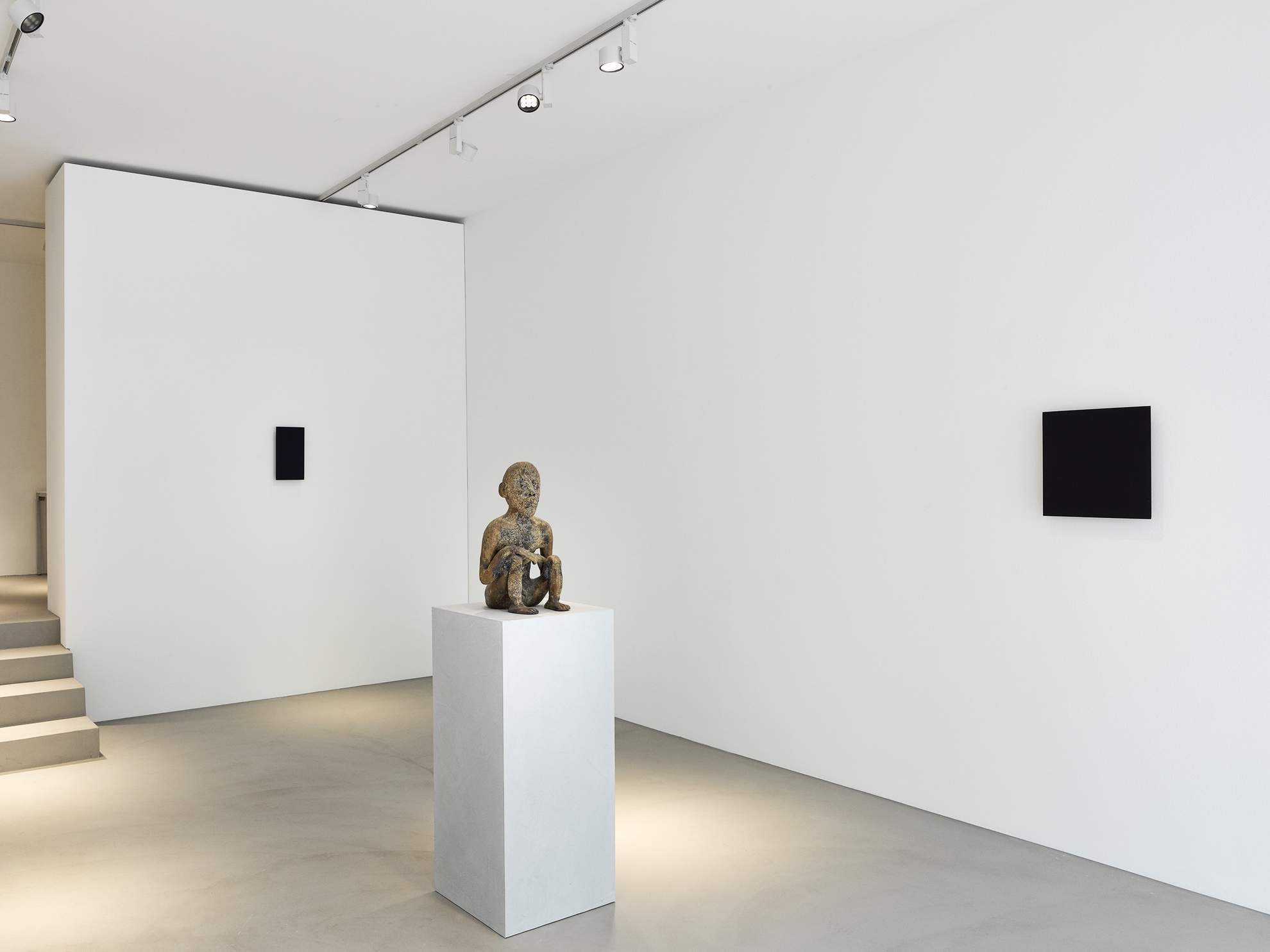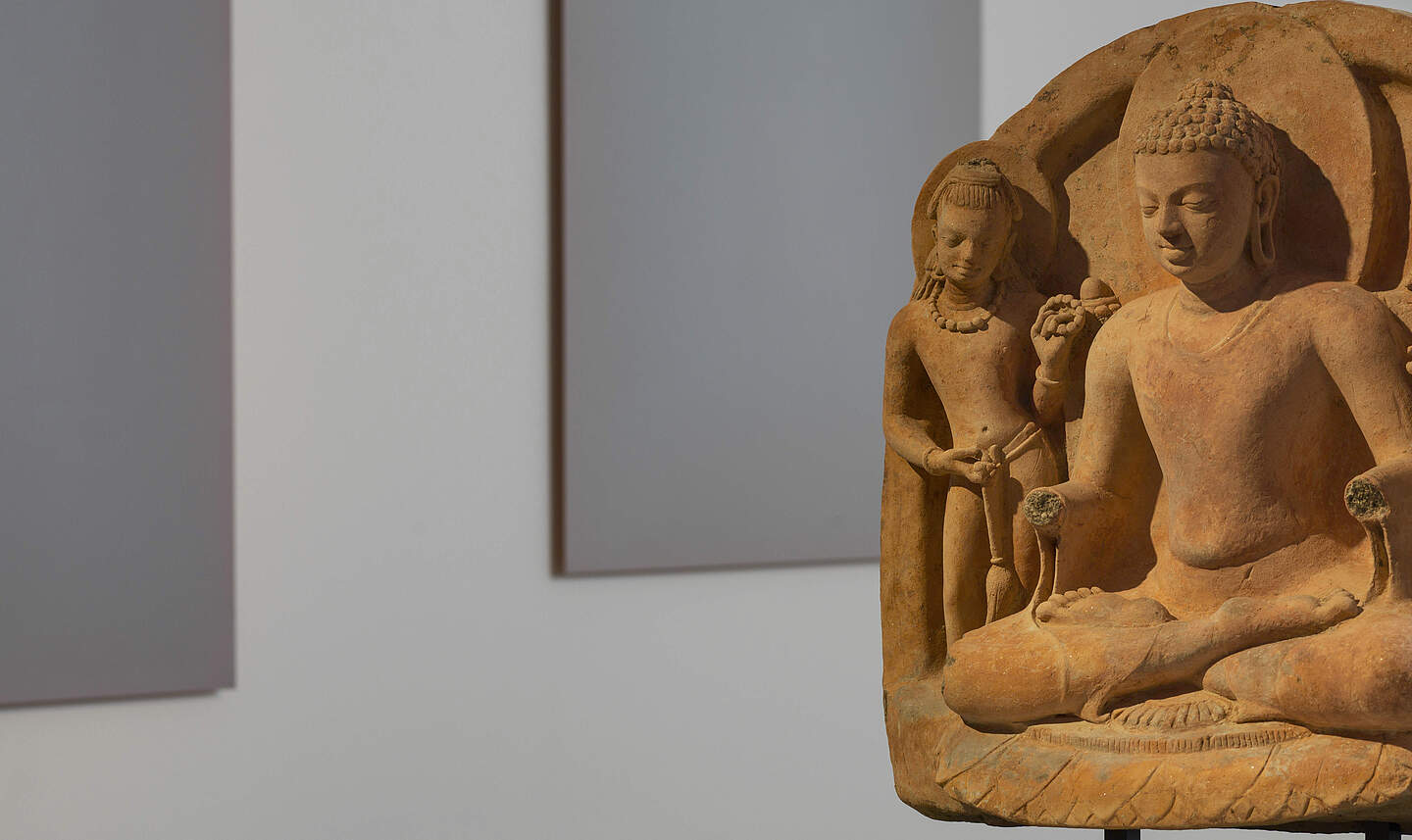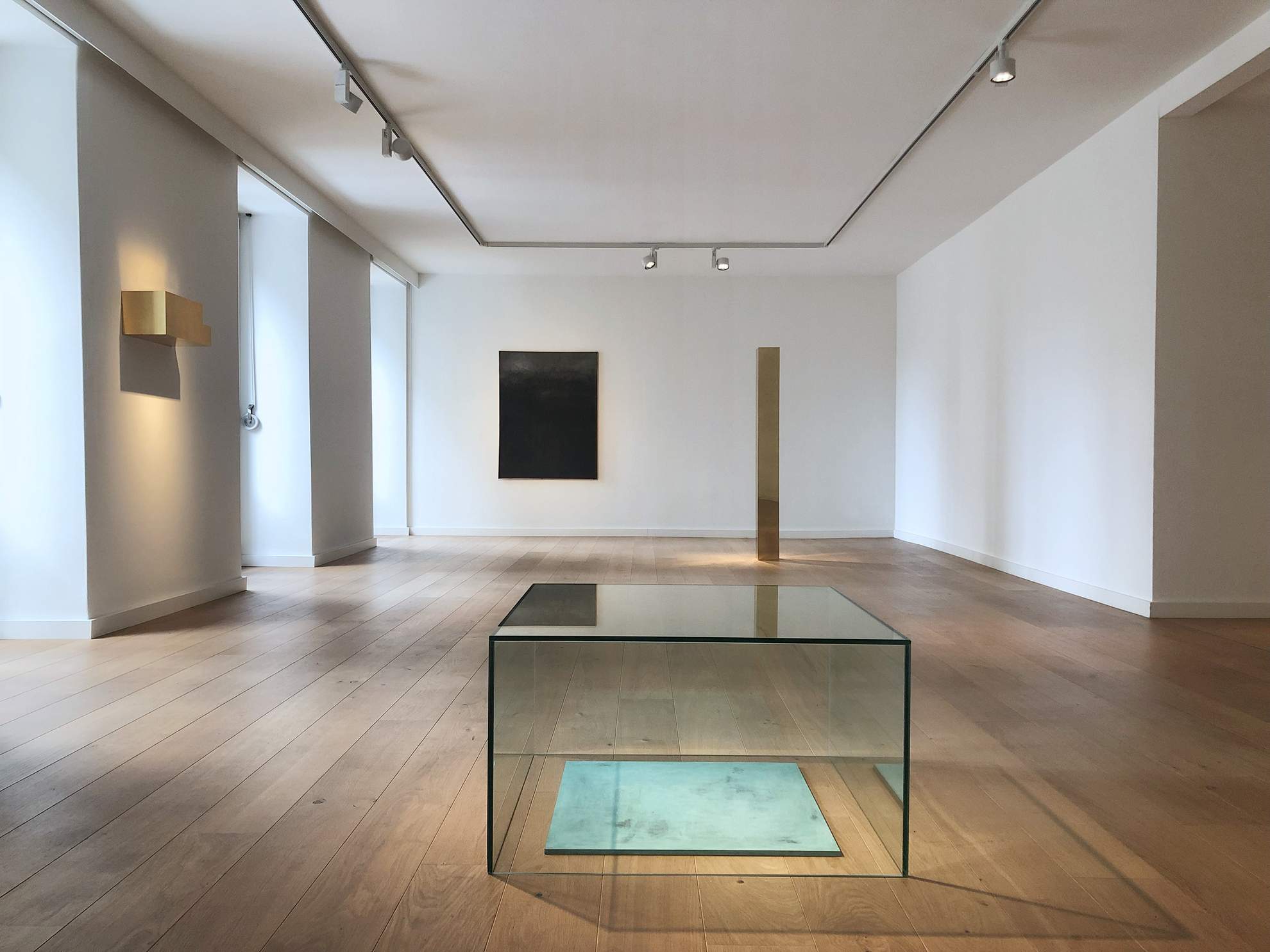
Banfora Figure
Yuji Takeoka, Günter Umberg, Jef Verheyen
-
On the ground floor of its premises on the Paradeplatz, Galerie Dierking devotes its current exhibition to the juxtaposition of a very rare tomb figure from the Banfora district (Burkina Faso), acquired at the end of the 19th century, with radically minimised, concrete pictures by Günter Umberg (b 1942).
On the upper floor is a further work by Umberg, combined with contemporary works by Japanese artist Yuji Takeoka (b 1946), resident in Düsseldorf, and early works by Belgian artist Jef Verheyen (1932 - 1984).
The works... emanate an almost meditative,
expansive stillness – a sense of calm
that invites the viewer's careful attention
in the presence of the works.
Here is more than a mere confrontation between sculpture and painting. Günter Umberg adopts – purposely and more strongly than before – the term "picture" for his works, playing around with an expanded concept. Umberg alludes to mediaeval altar paintings, the back of which had equal significance, not only with his undercoating of red bole, but also through the corporeality of his pictures, which taper towards the wall, to which they are deliberately hung at a distance. As a picture, the work belongs to the wall, which it indeed necessitates, while at the same time making a supreme bid for autonomy.
Umberg's pictures, starting with MDF in a format specified by the artist, are first primed with red bole. This gold-support, according to the artist's intention enriched with further pigments, extends over the edges, its colour thus becoming perceptible as included in the view of the picture. The surface is a layer of dammar-resin with pigments.
In the centre of the room, opposite the three Umberg works in their shades of black together with a strong deep blue, is placed the imposing seated African figure. The incredible presence and corporeality emanating from this naked body – representing an indigenous ruler from the Banfora district – is reflected in the impressive colour and spatial awareness of Günter Umberg's velvet-smooth pictures.
Yuji Takeoka's abstract sculptures stand in a reciprocal reflection of their substantial and spiritual raw material, which in turn is characterised by Takeoka's cultural tradition and his everyday life as an artist. Staging and spatial presentation of his sculptures are of prime importance to the artist, together with the existence of the material, the amount and form of which are determined by the artist's concept.
Materiality is also the determining factor in Jef Verheyen's early works, presented here. In contrast to his later works, here he includes the material of the canvas in the overall effect of his pictures, even emphasising and manipulating it. Like Günter Umberg's pictures, they constitute a colour space all their own. Like many post-war artists, Verheyen explored the possibilities offered by Asian art and philosophy, and the rendering of light, as well as the concept of void and stillness (The Tao of Painting, 1956). In these early works, he rendered his perception of space, light and energy almost in a raw state, yet without any recognisably distinctive signature. Rather, it is a colour movement achieved through the layered structure, which is not gesturally expressive but constructed.
By contrast, Takeoka's sculptures fill the space with almost reflecting surfaces, set in motion by the natural changing of light and shade, yet fascinating in their impressive immobility. The works of the three artists and the African sculpture emanate an almost meditative, expansive stillness – a sense of calm that invites the viewer's careful attention in the presence of the works.
Banfora Figure
Yuji Takeoka, Günter Umberg, Jef Verheyen
-
The works... emanate an almost meditative,
expansive stillness – a sense of calm
that invites the viewer's careful attention
in the presence of the works.
On the ground floor of its premises on the Paradeplatz, Galerie Dierking devotes its current exhibition to the juxtaposition of a very rare tomb figure from the Banfora district (Burkina Faso), acquired at the end of the 19th century, with radically minimised, concrete pictures by Günter Umberg (b 1942).
On the upper floor is a further work by Umberg, combined with contemporary works by Japanese artist Yuji Takeoka (b 1946), resident in Düsseldorf, and early works by Belgian artist Jef Verheyen (1932 - 1984).
Here is more than a mere confrontation between sculpture and painting. Günter Umberg adopts – purposely and more strongly than before – the term "picture" for his works, playing around with an expanded concept. Umberg alludes to mediaeval altar paintings, the back of which had equal significance, not only with his undercoating of red bole, but also through the corporeality of his pictures, which taper towards the wall, to which they are deliberately hung at a distance. As a picture, the work belongs to the wall, which it indeed necessitates, while at the same time making a supreme bid for autonomy.
Umberg's pictures, starting with MDF in a format specified by the artist, are first primed with red bole. This gold-support, according to the artist's intention enriched with further pigments, extends over the edges, its colour thus becoming perceptible as included in the view of the picture. The surface is a layer of dammar-resin with pigments.
In the centre of the room, opposite the three Umberg works in their shades of black together with a strong deep blue, is placed the imposing seated African figure. The incredible presence and corporeality emanating from this naked body – representing an indigenous ruler from the Banfora district – is reflected in the impressive colour and spatial awareness of Günter Umberg's velvet-smooth pictures.
Yuji Takeoka's abstract sculptures stand in a reciprocal reflection of their substantial and spiritual raw material, which in turn is characterised by Takeoka's cultural tradition and his everyday life as an artist. Staging and spatial presentation of his sculptures are of prime importance to the artist, together with the existence of the material, the amount and form of which are determined by the artist's concept.
Materiality is also the determining factor in Jef Verheyen's early works, presented here. In contrast to his later works, here he includes the material of the canvas in the overall effect of his pictures, even emphasising and manipulating it. Like Günter Umberg's pictures, they constitute a colour space all their own. Like many post-war artists, Verheyen explored the possibilities offered by Asian art and philosophy, and the rendering of light, as well as the concept of void and stillness (The Tao of Painting, 1956). In these early works, he rendered his perception of space, light and energy almost in a raw state, yet without any recognisably distinctive signature. Rather, it is a colour movement achieved through the layered structure, which is not gesturally expressive but constructed.
By contrast, Takeoka's sculptures fill the space with almost reflecting surfaces, set in motion by the natural changing of light and shade, yet fascinating in their impressive immobility. The works of the three artists and the African sculpture emanate an almost meditative, expansive stillness – a sense of calm that invites the viewer's careful attention in the presence of the works.
IMPRINT
© DIERKING 2025



